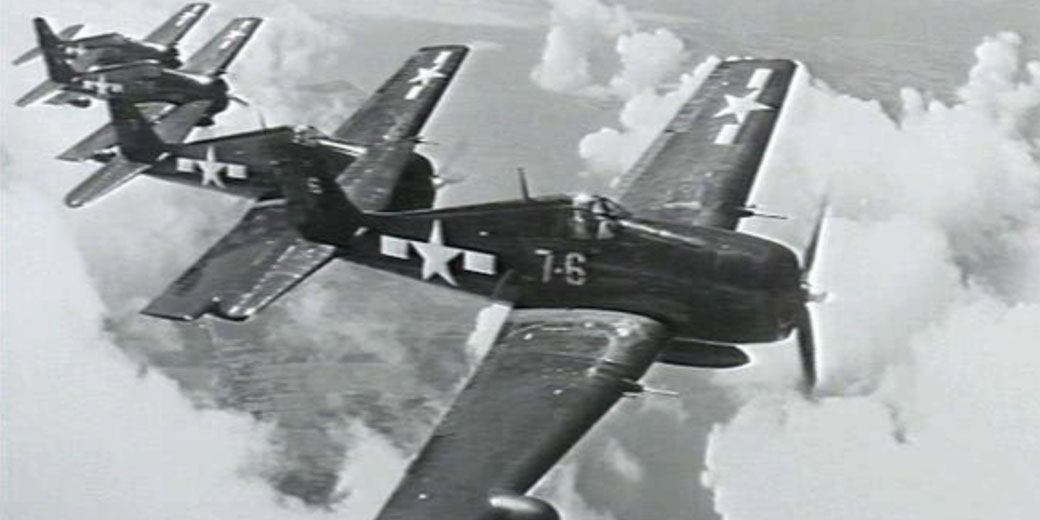What was the Great Marianas Turkey Shoot?

In June 1944, a major air and naval battle took place in the skies above the Philippine Sea during the Second World War.
The engagement became known to American pilots as the 'Great Marianas Turkey Shoot' because of the one-sided nature of the fighting, and resulted in the destruction of hundreds of Japanese aircraft.
By the battle’s end, American success crippled Japan’s naval air power.
What happened before the battle?
By early 1944, the Allies had already turned the tide of the Pacific War, and Japanese forces were steadily losing territory.
After the victories at Midway in June 1942 and Guadalcanal in early 1943, the United States adopted an island-hopping strategy that advanced its forces toward Japan’s home islands.
From each captured island, the Allies gained airfields and naval bases that allowed them to launch further offensives against Japanese positions.
Because of their location, the Mariana Islands became a key objective. From airfields on these islands, American B-29 bombers could reach industrial and military sites on the Japanese mainland.
As the threat became clear, Japanese commanders decided to commit their remaining carrier forces to defend the region.
They prepared Operation A-Go, a plan that aimed to destroy the American fleet in a critical battle using carrier aircraft supported by land-based planes from Guam and Rota.
Under the overall command of Admiral Chester Nimitz, American forces launched Operation Forager to capture Saipan, Tinian, and Guam.
Admiral Richmond Kelly Turner commanded the amphibious forces that landed US Marines on Saipan on 15 June 1944, which prompted Japanese naval leaders to assemble their fleet for a final strike.
How both sides prepared
Under Admiral Raymond Spruance and Admiral Marc Mitscher, American naval forces gathered a large fleet to protect the invasion.
Within the US Fifth Fleet, more than 500 ships included fifteen aircraft carriers, seven battleships, eleven heavy cruisers, two light cruisers, and dozens of destroyers.
In total, just under 900 carrier-based aircraft stood ready for combat. Their aircraft, including the F6F Hellcat and TBF Avenger, combined modern reliability with effectiveness in both air superiority and attack missions.
Radar detection also provided early warning so that Hellcats could intercept incoming raids at high altitude.
On the Japanese side, Vice Admiral Jisaburo Ozawa assembled five fleet carriers and four light carriers supported by battleships and cruisers.
His force included about 430 to 450 aircraft, which were mainly A6M Zero fighters, D4Y Judy dive bombers, and B6N Jill torpedo bombers.
Because heavy losses in previous battles had claimed many veterans, a large portion of the pilots were inexperienced.
As Japan faced severe shortages of both planes and trained aviators, its new aircraft designs could no longer match the firepower or durability of American planes.
Nevertheless, Japanese commanders hoped to deliver a decisive blow against the American invasion fleet.
How the battle began
On the morning of 19 June 1944, Japanese carriers launched several large waves of aircraft against the American fleet.
With radar detecting the incoming raids at long range, Hellcat fighters intercepted the enemy before they reached their targets.
As Japanese planes drew near, American ships filled the sky with anti-aircraft fire, which destroyed many attackers before they could release their weapons.
At the same time, American submarines, such as USS Albacore, struck the carrier Taiho with a single torpedo that caused massive fuel vapor explosions, while USS Cavalla hit the carrier Shokaku with three torpedoes.
Both carriers sank, and the loss of these ships further weakened Japan’s striking power as the battle continued.
The "Turkey Shoot"
During the course of the day, American pilots destroyed wave after wave of Japanese aircraft.
Because many of the aviators were inexperienced and flew outdated planes, the Hellcats enjoyed a clear advantage in speed and armour that produced superior firepower.
By nightfall, US pilots had shot down roughly 300 Japanese aircraft while losing about 30 of their own.
Analysts later estimated that the Hellcats achieved a kill ratio of about 12 to 1.
After the battle, many pilots compared the lopsided fight to shooting turkeys in a barrel, which gave the engagement its famous nickname.
On the following day, American forces launched a counter-strike against the Japanese fleet that was retreating.
During these attacks the carrier Hiyo was sunk, and the remaining fleet suffered heavy losses.
Over two days, Japanese forces lost close to 480 aircraft, while the Americans lost 123, most during the long-range strike on 20 June when some aircraft ran out of fuel.
Impact and Consequences
After the battle, Japan’s naval air power had been destroyed, and its capacity to wage large-scale carrier warfare never recovered.
The loss of hundreds of aircraft and irreplaceable veteran pilots could not be reversed, which left Japan unable to train replacements in time.
As a result, Japan increasingly relied on land-based aircraft and later resorted to kamikaze tactics.
For the United States, the victory secured control of the Mariana Islands and provided airfields from which B-29 bombers could strike Japan’s mainland.
These airfields later hosted the bombers that dropped the atomic bombs on Hiroshima and Nagasaki in August 1945.
American naval forces gained clear superiority in carrier warfare, and the Japanese fleet never again posed a serious threat at sea.
What do you need help with?
Download ready-to-use digital learning resources
Copyright © History Skills 2014-2025.
Contact via email
With the exception of links to external sites, some historical sources and extracts from specific publications, all content on this website is copyrighted by History Skills. This content may not be copied, republished or redistributed without written permission from the website creator. Please use the Contact page to obtain relevant permission.





